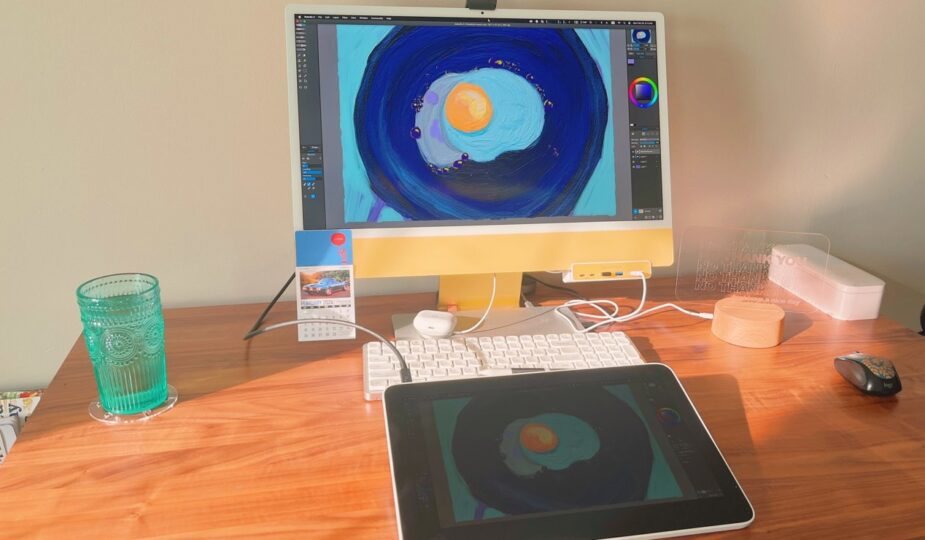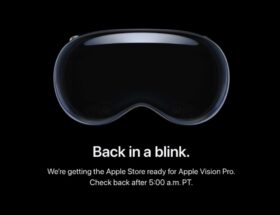Wacom One 13 Touch
1 Facebook x.com Reddit
Wacom One 13 Touch
3.5/5 Buy from Wacom
Wacom has taken its Wacom One tablet back to the drawing board and significantly improved it from the first version with the release of the new Wacom One 13 Touch.
If you're starting your digital art journey or want to improve your creative tools, there are many options out there, and figuring out which one is the best to use can be a little overwhelming.
That's why I'm looking forward to trying out the Wacom One 13 Touch. It's a pen display that lets you draw directly on the screen, providing a more immersive and tactile experience than traditional graphics tablets. So, if you're not willing to pay the price for a Cintiq, perhaps the Wacom One 13 Touch is right for you.
Wacom One 13 Touch – design
The Wacom One 13 Touch weighs just under 2 pounds and features a 13.3-inch display with a resolution of 1920 x 1080 pixels. Its plastic design is obviously different from the iPad Air I use for most of my creative endeavors, but it's the same as other graphics tablets I've used.
The screen is a decent size, although it does have significant bezels around the edges, which again seems a little odd if you're using an iPad with an edge-to-edge screen. However, this is not a deal breaker in the slightest.
I was surprised at how resistant to fingerprints and smudges the One was. And even when I did get the screen dirty with my hand, a quick wipe with a lint-free cloth seemed to do the trick.
Review of Wacom One 13 Touch — The move to USB-C is the biggest improvement over the previous one
The biggest update is undoubtedly that the new Wacom One line uses a single USB-C cable compared to the original Wacom One, which I was looking at which required the dreaded X cable. This means your One is significantly more portable, which is great for artists on the go. Plus, fewer wires make it easier to move the tablet as needed.
Wacom Touch 13 pen
Equally important is the tablet itself is the stylus you use. If you're familiar with the Apple Pencil, the Wacom pen won't feel like a serious replacement. And honestly, that's probably a good thing.
Where the Wacom One Pen beats the Apple Pencil is that it immediately feels much better on the Wacom One than the Apple Pencil does on the iPad. It's probably most similar to using a ballpoint pen on fairly smooth paper.
Review of Wacom One 13 Touch — The Wacom One pen requires no batteries or cords
It also does not require batteries. This is very important if you engage in marathon painting sessions or often forget to charge things.
Like other Wacom pens, the Wacom One Pen is replaceable. Not only does this allow you to replace it if it gets a little worn, but it also allows you to change the tips for different levels of friction. This is a great way to emulate traditional instruments that you may be more familiar with.
I note that since the handle is completely round — unlike the second generation Apple Pencil — you'll lose it if you sit down. Taking review photos was frustrating as the handle seemed hell-bent on going straight to the floor. So when you're not using it, make sure it's tucked into the handy little loop at the top.
The strangeness that this is the Wacom One Stand
Wacom also included the Wacom One Stand with the Wacom One 13 Touch, and I have to say it's an odd choice. I'm not sure why the back of the Wacom One doesn't have extendable feet, but I wouldn't call a stand an elegant solution. I wouldn't even call it a “stand” — I think Wacom is taking some liberties with this term.
Review of Wacom One 13 Touch — Wacom One magnetic stand
The stand is a pair of free-standing magnetic feet made of plastic and rubber that you can place on a desk or table and rest your Wacom One against. On the product description page, Wacom states that the stand “can be adjusted to perfectly suit the way you work.”
This is not true. No matter what, the stand will support your device to a certain extent since it is not adjustable. You can push your device forward or backward to have a say in the perspective.
Review of Wacom One 13 Touch — The Wacom One Stand is obviously not adjustable
They're also pretty easy to lose or leave behind.
Also “stand” — again, I use this term quite broadly — costs $45, which seems overpriced for what you get. For me this is a rare bug with one of the Wacom products.
Setting up the Wacom One 13 Touch
If there's one part of this process that I didn't like, it was setting up the tablet. In theory this should be easy. You simply plug in your tablet, download the driver, and you're done.
However, this was not my experience. No, instead I found that when the tablet was connected and the driver was installed, I repeatedly received the same error: no display signal. I was worried that this was somehow related to the fact that I have an iMac M1.
I have completed the troubleshooting steps. I uninstalled and reinstalled the driver. I restarted my Mac. I've tried different USB-C ports on both my iMac and Wacom One. Almost no matter what I did, it didn't seem to work.
I stepped away from the Wacom One to work on other projects and decided to come back to it later. When I did this, I suddenly started working. There's really no rhyme or reason to it, but everything has worked fine since then.
Using the Wacom One 13 Touch
This is hardly my first Wacom product. I've been in the Wacom ecosystem since 2009, so I knew what to expect, and it was amazing.
Drawing is as smooth as any other Wacom product I've used. 4096 pressure levels provide smooth lines, realistic line widths and angle changes.
It was fast, efficient and in the spirit of traditional media. It worked well with all my favorite programs, including Adobe Photoshop, Rebelle Painter, and Affinity Designer.
As for color rendition, it is quite good. I still had to double-check the colors on my iMac's screen, but all things considered, they were pretty close.
Review of Wacom One 13 Touch — Works with all your favorite well-known programs, such as Adobe Photoshop.
However, while I was working, something was wrong. It took me a few minutes to figure out what I thought was strange about the Wacom pen — And then it dawned on me.
You can't flip it over and use the inside to erase, which is very frustrating if you've used other graphics tablets that support this feature. However, you also can't flip the Apple Pencil upside down.
And yes, it's a touch device, which frankly seems a little silly to use on a graphics tablet. If you're going to draw, the last thing you want is for your fingers to be registered as extra input, but then again, maybe that's not the case.
Review of Wacom One 13 Touch — Power, Menu, and Touch Mode Buttons
It turns out that you can enable, disable, or partially disable the touch function. And it was in this partially disabled state that the Wacom One Touch gained recognition.
You see, the Wacom One doesn't have the nifty side panel with buttons like the Intuos line. These buttons are great because you can customize them to use common functions like undo, redo, and changing brush size — and then hit them with your non-dominant hand.
But the Wacom One allows you to enable sidebar menus that appear on the screen, and although the rest of the screen doesn't see your fingers as input, the onscreen menus do register it. I liked this feature because it immediately felt familiar to me from my previous experience with Wacom products.
Overall, it was exactly what I expected. It's a fantastic drawing tool that works flawlessly with programs already selected to work with other Wacom products.
Why you choose the Wacom One over the iPad
So, chances are, you're probably wondering why you actually decided to go with the Wacom One over something like the iPad. That's the reason — because you are the kind of artist who is loyal to tabletop art software.
That's all. I find it incredibly difficult to recommend a Wacom One Touch over an iPad if you're completely happy using Procreate, ArtRage, or Adobe Fresco. These apps are fantastic, and the iPad's speed, responsiveness, and color reproduction are top notch.
However, these are far from the only programs that artists use. I like Rebelle, which doesn't have an iPad version but does exist on macOS and Windows. The Wacom One Touch pairing with Rebelle is perfect.
Wacom One 13 Touch – pros
- Works seamlessly with major art programs.
- Works with macOS, Windows, Chrome and Android.
- On-screen drawing is easy.
- Easy to use by hand. holds, easy to change tips
Wacom One 13 Touch screen – cons
- Can't flip the handle to erase
- No built-in angle adjustment
- Expensive
- Stand costs $45 , doesn't seem like the best solution
Wacom One 13 Touch – Rating: 3.5 out of 5 stars
It's not easy to rate each element on a one-to-one scale. five scales, especially when much depends on the user's preferences. I think the Wacom One 13 Touch is a fantastic tool for artists who use a lot of desktop apps, but for the average person looking to dive into digital art, the iPad might be a better fit.
Where to buy Wacom One 13 Touch
You can purchase your own Wacom One 13 Touch from Wacom.com for $509.95. The stand is sold separately for an additional $44.95.
As an alternative, Amazon and Best Buy are selling the Wacom One 13 Touch for $599.95.









